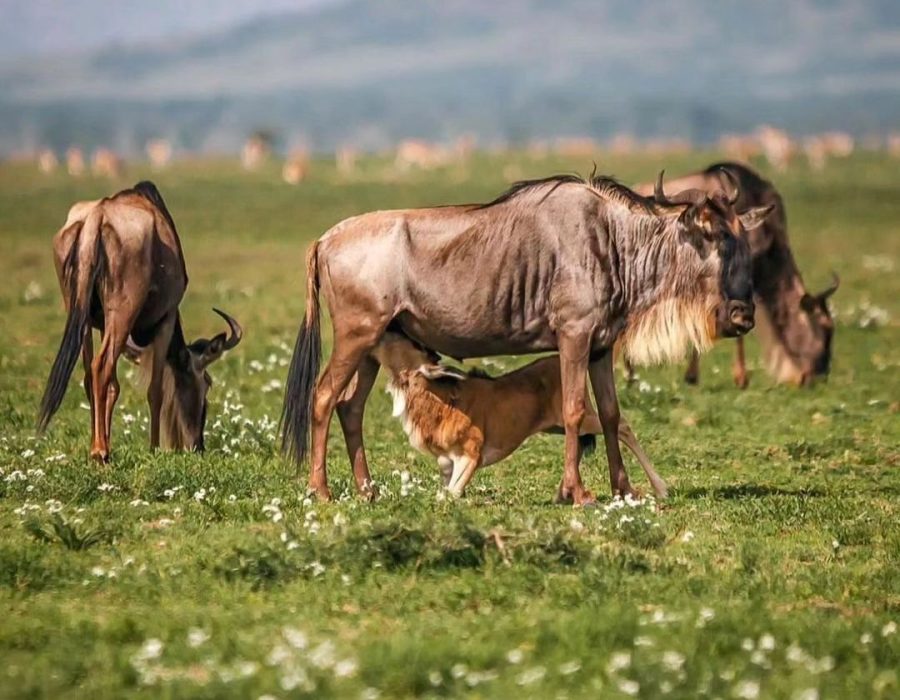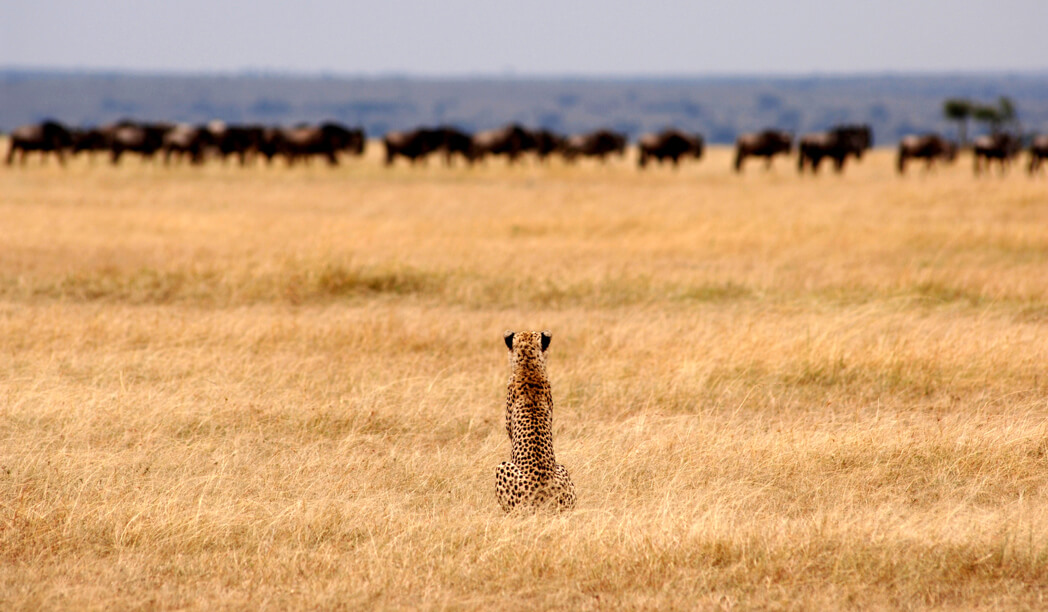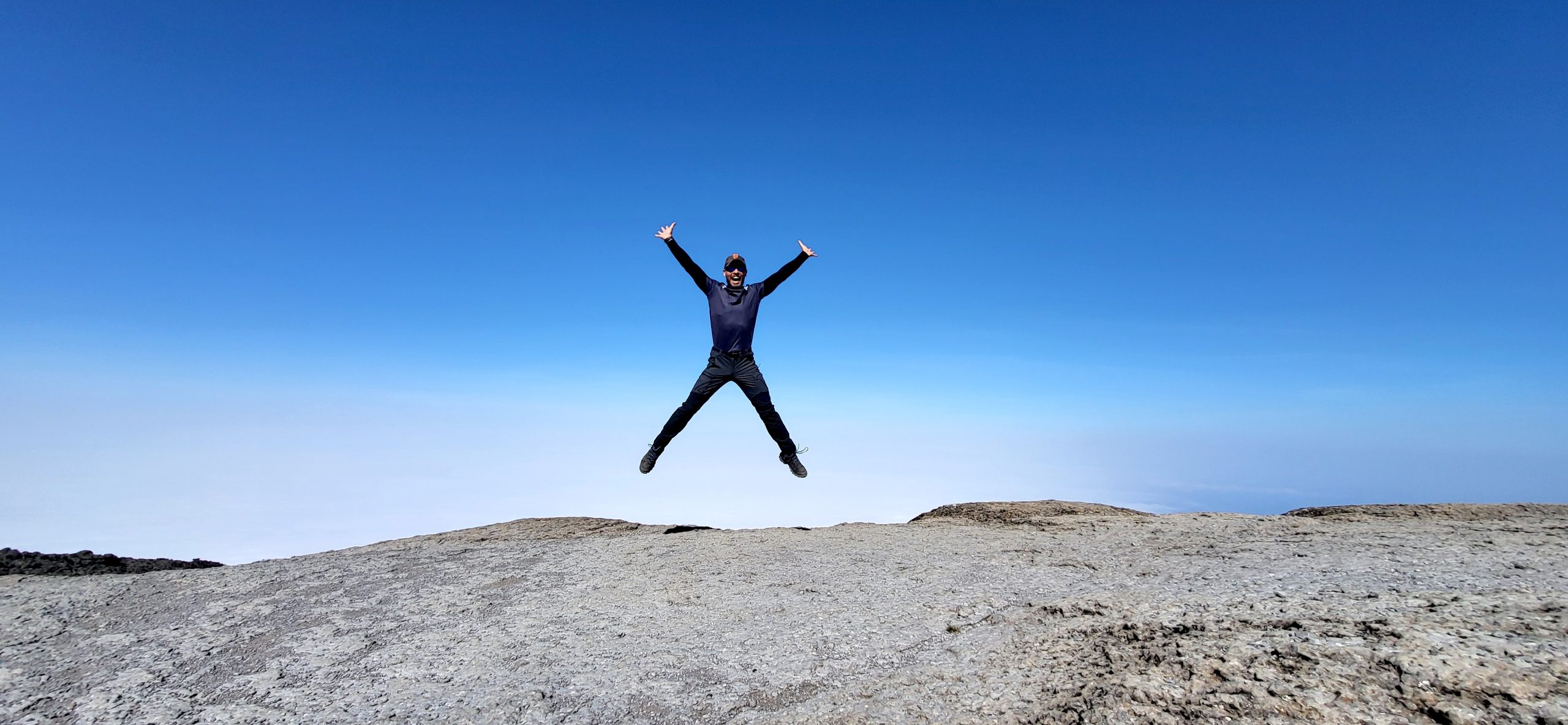Experience the Magical Wildebeest Calving Season in Tanzania’s Serengeti with Materuni Tours
Every year, between late January and early March, the southern plains of Tanzania’s Serengeti—especially the Ndutu region—become the stage for one of the most captivating wildlife spectacles on Earth: the wildebeest calving season. During this period, over 500,000 female wildebeest give birth, resulting in nearly 8,000 calves born daily. The short grass plains of Ndutu, with their rich minerals and wide visibility, provide the perfect setting for mothers and newborns to survive the first vulnerable days of life. Materuni Tours, a classic and deeply experienced safari operator in Tanzania, offers unparalleled access to this seasonal marvel.
With a reputation built on authenticity, conservation-focused guiding, and comfort, Materuni ensures that guests not only witness the mass calving but also gain deep understanding of the ecosystem, predator dynamics, and the annual rhythms of the Great Migration. Whether you’re a wildlife photographer, a nature enthusiast, or a first-time safari traveler, the calving season in the Serengeti with Materuni Tours is a rare and moving opportunity to connect with raw nature in its purest form.

Best Time for Calving Season in the Serengeti – Especially Ndutu
The wildebeest calving season reaches its peak between late January and early March. During this time, the herds settle across the Ndutu plains, a nutrient-rich region spanning the Southern Serengeti and the Ngorongoro Conservation Area. Thanks to fertile volcanic soils and short grasses, this area becomes an ideal nursery ground for wildebeest. The timing aligns perfectly with seasonal rains, which promote lush vegetation necessary for lactating mothers. Ndutu is widely regarded as the best place to witness the mass birth events due to its open landscapes and exceptional predator visibility.
When is the best time to see the wildebeest calving season in Tanzania?
The calving mainly occurs in the Ndutu region, where the southern plains of Serengeti meet the northern section of the Ngorongoro Conservation Area. This region provides ideal conditions due to its mineral-rich grasses and open terrain. The wide visibility helps protect newborn calves from surprise predator attacks, while the flat plains make game viewing excellent for safari visitors.
Where does the wildebeest calving take place in the Serengeti?
The calving mainly occurs in the Ndutu region, where the southern plains of Serengeti National Park meet the northern section of the Ngorongoro Conservation Area. This region provides ideal conditions due to its mineral-rich grasses and open terrain. The wide visibility helps protect newborn calves from surprise predator attacks, while the flat plains make game viewing excellent for safari visitors.
How many wildebeest calves are born during the season?
Each year, an estimated 500,000 wildebeest calves are born over a concentrated period of about three weeks. On peak days, up to 8,000 calves are born daily. The synchronicity of births increases the chances of survival for individual calves, as predators become overwhelmed by the sheer numbers and cannot prey on every newborn.
Is the calving season good for photography?
Absolutely. The calving season is one of the most photogenic times to visit the Serengeti. The vast open plains provide stunning backdrops, and scenes of mothers bonding with newborns, intense predator-prey drama, and massive herds offer once-in-a-lifetime photo opportunities. The golden light of the wet season and the green landscape also make colors pop, adding richness to every shot.
What predators can be seen during this time?
The high concentration of vulnerable young wildebeest attracts numerous predators, including lions, cheetahs, hyenas, jackals, and leopards. Cheetahs often target isolated calves, lions may hunt in groups, and hyenas are known for their persistence and efficiency. This season showcases the raw balance of survival in nature, making it a powerful and unforgettable viewing experience.

Is Ndutu accessible during the calving season?
Yes, Ndutu is accessible by both road and air. Most safari-goers choose to fly into Ndutu airstrip from Arusha or other safari hubs. The area is served by well-established safari tracks that allow 4×4 vehicles to move efficiently across the plains. Materuni Tours offers well-planned itineraries with experienced guides who know the terrain and animal behavior intimately.
What kind of accommodation is available during calving season in Ndutu?
Ndutu offers a range of accommodation options, including mobile tented camps, luxury lodges, and eco-friendly safari camps. Mobile camps are especially popular during this time, as they move with the herds and bring guests close to the action. Materuni Tours carefully selects accommodations based on guest preferences, ensuring comfort, safety, and excellent positioning near the wildlife activity.
Why choose Materuni Tours for a calving season safari?
Materuni Tours is a locally owned and operated safari company with deep roots in Tanzanian culture and wildlife expertise. Their guides are seasoned trackers who understand the migration patterns, calving behavior, and predator movements. The company emphasizes authentic, ethical, and sustainable safari experiences, ensuring that your visit benefits both conservation and local communities. With Materuni, you’re not just observing nature—you’re deeply engaged with it.








